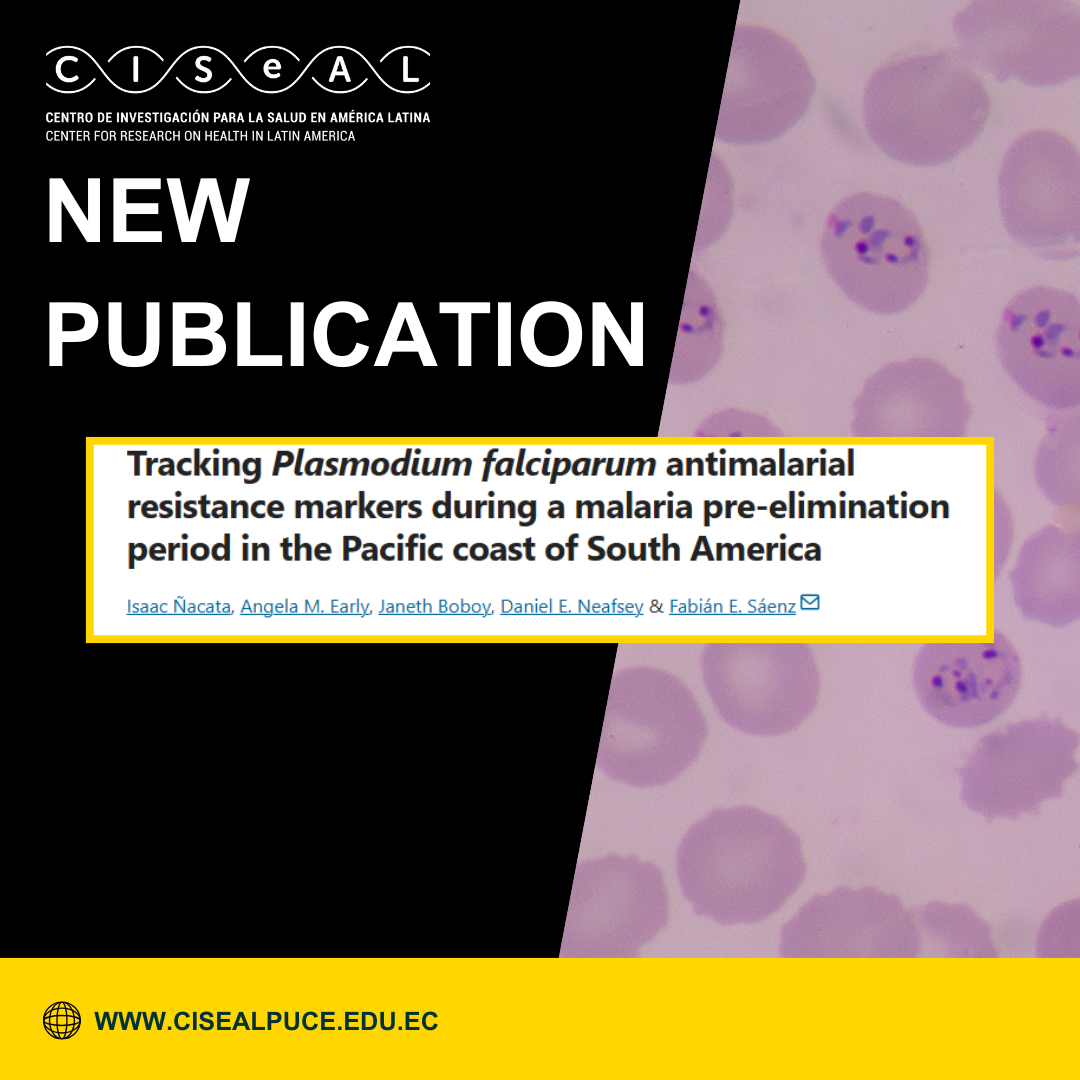 The study analyzes the dynamics of antimalarial resistance in Plasmodium falciparum on the Pacific coast of Ecuador during 2019–2021, a critical period toward malaria pre-elimination, with emphasis on the influence of pharmacological pressure and human migration. The study was led by Dr. Fabián Sáenz, principal investigator of CISeAL, and was developed from the Bachelor's dissertation work of Isaac Ñacata in Biological Sciences. The work evaluated resistance genes (Pfcrt, Pfdhps, Pfdhfr, Pfmdr-1, Pfk13, and Pfaat1) in samples from the Esmeraldas and Carchi provinces and compared the frequencies of resistance mutations with data from 2013–2015. The results show a significant increase in haplotypes resistant to chloroquine (Pfcrt) and pyrimethamine (Pfdhfr), evidencing strong selective pressure. In contrast, sensitivity to sulfadoxine (Pfdhps) and artemisinin (Pfk13) was maintained, with the wild-type haplotype present in 100% of samples. In addition, the A16V mutation in Pfdhfr, linked to resistance to proguanil, was identified for the first time in Ecuador. The NEDFSDFY haplotype was also detected in Pfmdr-1, associated with multidrug resistance, reflecting the complexity of the resistance landscape.
The study analyzes the dynamics of antimalarial resistance in Plasmodium falciparum on the Pacific coast of Ecuador during 2019–2021, a critical period toward malaria pre-elimination, with emphasis on the influence of pharmacological pressure and human migration. The study was led by Dr. Fabián Sáenz, principal investigator of CISeAL, and was developed from the Bachelor's dissertation work of Isaac Ñacata in Biological Sciences. The work evaluated resistance genes (Pfcrt, Pfdhps, Pfdhfr, Pfmdr-1, Pfk13, and Pfaat1) in samples from the Esmeraldas and Carchi provinces and compared the frequencies of resistance mutations with data from 2013–2015. The results show a significant increase in haplotypes resistant to chloroquine (Pfcrt) and pyrimethamine (Pfdhfr), evidencing strong selective pressure. In contrast, sensitivity to sulfadoxine (Pfdhps) and artemisinin (Pfk13) was maintained, with the wild-type haplotype present in 100% of samples. In addition, the A16V mutation in Pfdhfr, linked to resistance to proguanil, was identified for the first time in Ecuador. The NEDFSDFY haplotype was also detected in Pfmdr-1, associated with multidrug resistance, reflecting the complexity of the resistance landscape.
The temporal comparative analysis of frequencies revealed a substitution of dominant haplotypes in localities such as Esmeraldas, and the persistence of genetic diversity in samples from San Lorenzo and Nariño, Colombia, which evidences the role of cross-border migration in the dispersion of resistant parasites. Despite the increase in resistance to drugs such as chloroquine and sulfadoxine-pyrimethamine, the efficacy of first-line treatment (artemether-lumefantrine + primaquine) is maintained. These findings reinforce the need for continuous genomic surveillance to anticipate changes in therapeutic efficacy and strengthen control strategies in elimination scenarios.
Want to learn more about this study?
We invite you to read the full article at the following link:
https://rdcu.be/ewb3M



